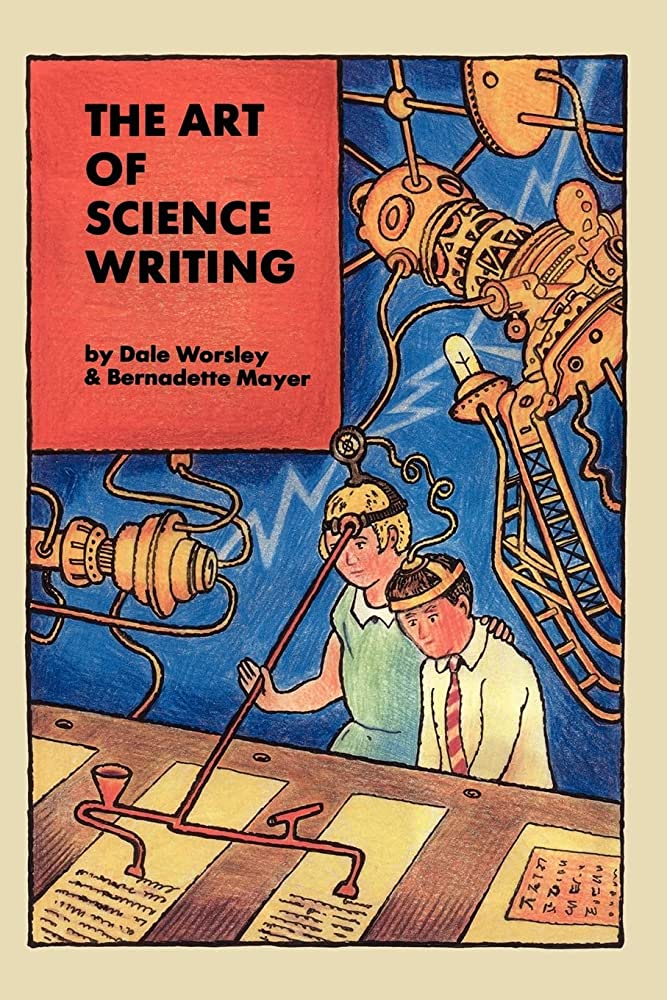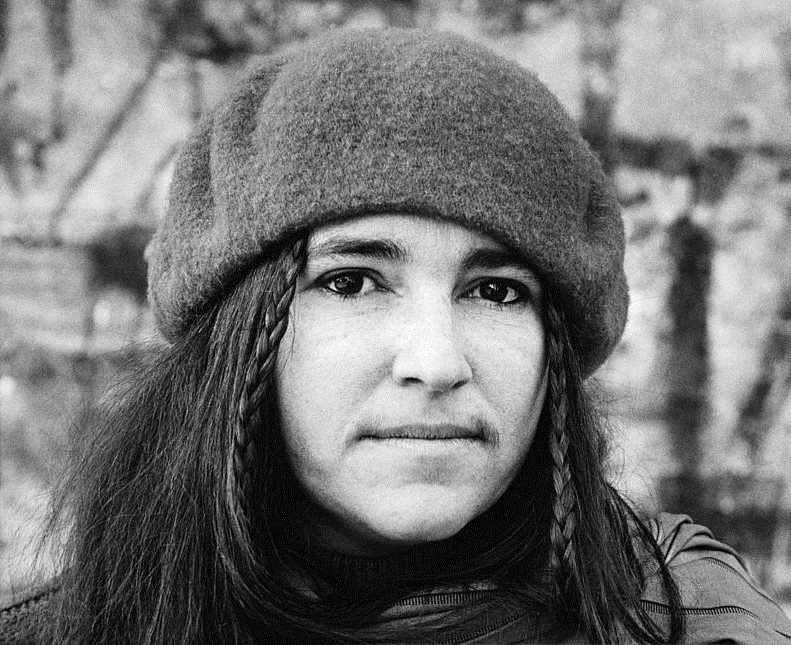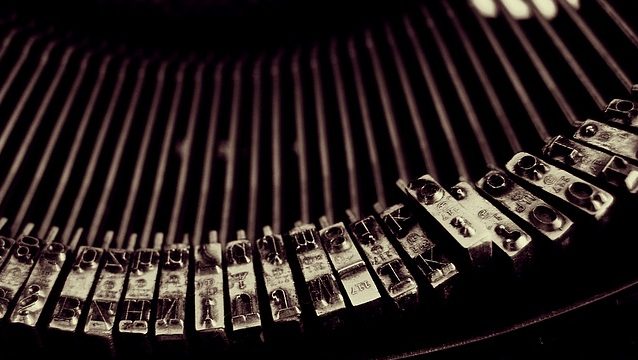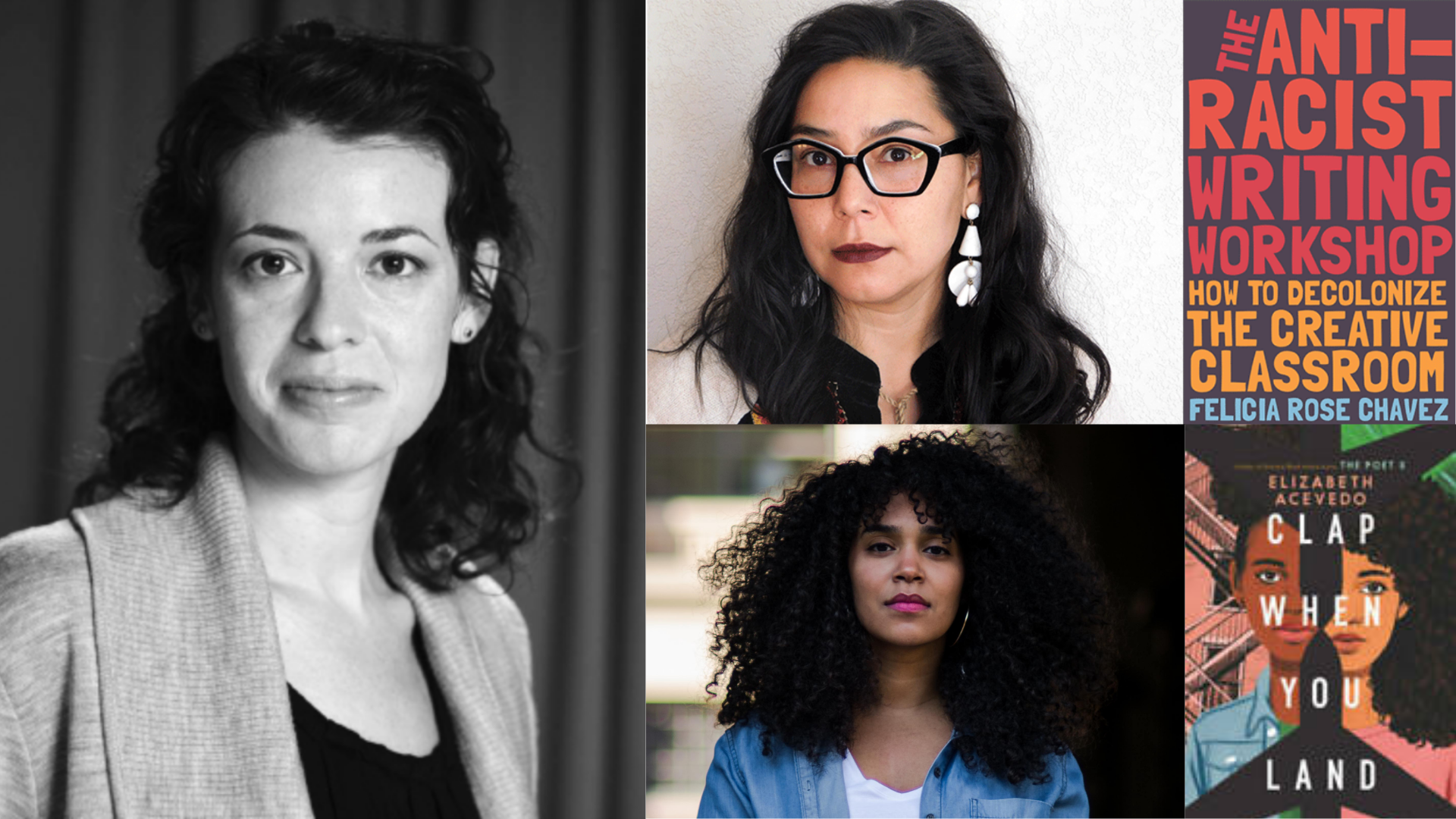Dale Worsley remembers late poet, writer, and artist Bernadette Mayer and reflects on their partnership writing The Art of Science Writing (Teachers & Writers Collaborative, 1989). Learn more about Bernadette Mayer and her work at www.bernadettemayer.com.
I think it was Keith Richards who said that if you want the hair to stand up on the back of your neck, sit on a chair alone in the middle of a dark room and turn up the volume on a Roy Orbison record. That describes my first experience with Bernadette Mayer, whom I hadn’t known until we were assigned to work on The Art of Science Writing (Teachers & Writers Collaborative, 1989) together. She wasn’t trying to terrify me intentionally (at least I don’t think she was.) She was just a poet having her ideas, which happened to be wilder ones than I’d expected to include in a resource for public schools. Take some of her contributions to the “Writing Experiments” chapter of the book: “Dream Writing for Problem Solving” or “Sending Messages to Other Planets” or “The Question of Human Reproduction.” And, of course, “Positing Wild Theories.” Not your garden variety odes, acrostics, and list poems. Yikes!
Our task was to produce creative science (and math) writing ideas for high school teachers, and I had imagined taking a more conservative approach. I fully embraced Teachers & Writers Collaborative’s unapologetic mission to promote creative thinking in the schools but felt that to make that happen, you had to be strategic, work from within the structures we had, open the door out of the classroom box from the inside, and guide teachers and students toward it step-by-step. Gary Snyder once said: “What makes writing good is the wildness in it.” Bernadette was ready to get that wildness going without delay. She was ready, in her deceptively quiet way, to demolish entire classroom walls from the inside or the outside, and devil take the hindmost.
Gary Snyder once said: “What makes writing good is the wildness in it.” Bernadette was ready to get that wildness going without delay.
My fears abated as we worked. I began to see our collaboration as dynamic. Maybe together we could pull off something that was both wild and strategic. “There must be a disciplined eye and a wild mind,” Dorothy Parker said about writing. That was the ideal we instinctively strove for. To judge by how I have been able to use some of Bernadette’s experiments in my work in the schools, I think we succeeded.
One of her experiments that I have found useful is the idea of “Place Histories,” which gives students a sweeping sense of time and a comprehensive understanding of the complexities of space. The exercise merges science and culture in a way that you’re not usually taught to think, feel, and see in school—the way an artist might, from an unusual perspective. In the samples from The Art of Science Writing, fire becomes rock; continents bump into each other and build mountains; rivers slice the mountains; rain falls and produces soil; plants grow; insects, fish, dinosaurs evolve; First Nations people appear on the landscape, singing their songs of mystery and connection; European humans replace them, cover the land with asphalt; different cultures from around the world come and go with increasing rapidity—all on a Bronx street corner, where a phone rings in a phone booth and you answer it. Wonderful.
The other contribution of Bernadette’s that I have deployed to good effect is “A History of One’s Own Ideas,” wherein students are invited to honor their ideas and how they developed over time. They are encouraged to reflect on them and to put them in the perspective of learning how they have become who they are now and who they will become. Her exercise prompted me to include an excerpt from Bertrand Russell’s 1944 memoir The Autobiography of Bertrand Russell in a later book that I put together for Heinemann, Teaching for Depth: Where Math Meets the Humanities. The passage traces the evolution of his thinking from the age of 11, when he had “got over my disappointment that [Euclid] began with axioms, which had to be accepted without proof” and began to find delight in the great mathematician’s concepts. I used the excerpt recently in a Philadelphia high school as a model for teachers to write their own histories. Teachers dragged their feet into the room feeling resentful that they had to waste their time on an irrelevant writing workshop, and at first they found Russell’s language pompous, but after they had traced their own ideas through time and felt a fresh sense of accomplishment from doing so, they left in a joyous mood. Along the way, we had learned from one of the teachers about Russell’s love of the work of Percy Bysshe Shelley, and we read “To a Skylark.” The teachers had made discoveries about themselves, connected with great thinkers, become inspired.
To continue the Snyder quote: “The wildness gives heart, courage, love, spirit, danger, compassion, skill, fierceness, and sweetness—all at once—to language.” I look back and thank Bernadette for her scary wildness, which has freed the imaginations of countless students and their teachers as well.
–– Dale Worsley

Three writing experiments from The Art of Science Writing:
Positing Wild Theories
In objective science writing, we cannot say something that patently isn’t true or present as truth something that cannot be verified or proven. In a literary essay or freewriting exercise, we can say “Human beings are filled with sadness” or “Snow comes out of the ground and flies upward” because these are acceptable as individual opinion or literary device. Nonetheless, it’s challenging to say, in a scientific essay, something such as “An atom is the basic component not of matter but of memory. I will now support this hypothesis,” etc. It is an interesting experiment to posit wild, instinctive theories and attempt to prove them in writing.
A History of One’s Own Ideas
When Albert Einstein was asked to write his autobiography, he wrote little about his personal life and mainly about the history of the development of the ideas that led to the general and special theories of relativity and to his other conceptions in physics.
Students and teachers can set aside a day or a week or a year to attempt to write a history of the development of the scientific ideas that have influenced them most, how and why, and what might happen in the future. Such histories or autobiographies of ideas most often will be written in the form of discursive prose, which may be interspersed with diagrams, equations, illustrations, and other visual data. Occasionally a history of an individual’s ideas has been written in poetic form, for example Wordsworth’s The Prelude and R. Buckminster Fuller’s How Little I Know, two long poems. The work need not be long, however.
When Einstein wrote his history, he spoke abstractly about the concepts of thinking and wonder, and about the feelings of awe experienced in childhood. In writing such a history, it’s vital to recognize that the way we think, learn to think, reach conclusions, and create questions are as much the stuff for analysis as what we know (and what we do not know).
A good way to begin this project is to discuss childhood memories, especially those that relate to wonder and awe.
Place Histories
Here’s a way to have a lot of fun with natural history and to let yourself and your own life into it. Write about a place you know: a streetcorner, a pond, a shop, a phone booth, a riverbed, whatever. Bring to it everyting you know or can learn about the place, from its most distant past to the most recent thing you can remember about it. If you haven’t got the time or inclination to research all the place’s deep past, make it up yourself, but keep in mind the general sorts of changes that the earth has gone through in the last billion years or so.
You may wan to divide it into lines, like a poem, or write one big paragraph of prose. It might also be fun to do this as a collaboration, with each student working on a different part of the place’s history. Both the following examples are about a streetcorner in New York City.
First, I was fire. Then, I became grey rock. I bent down and I was tossed up. Africa bumped into me. I broke and I cracked, and I started to look like shattered glass. A river ran through me, and it cut me in two. It went away beneath the ground and I climbed up where clouds live. Rain stuck in my cracks and melted my rock to soul. Something green and red came up out of me and it swung back and forth in the wind. A big bug, big as a bicycle landed on it. My tall back relaxed and I sank down again, and the river came back to me. Black fish with whiskered snouts swam over me. The river moved to someplace else, and I found something huge and gray that liked to stand on me. Then came the first cold, and the second, and I had a deep white blanket, and I slept while it carved and sculpted me. I threw off the cover and skinny two-legged things came to me. They lit red fires, they cooked by throwing hot rocks into baskets. Then there were others, and they took black tar and poured it on me. And made big houses beside me, and dug trenches through me. Last night, a woman walked up and down on me asking for help. And now the telephone in the booth is ringing.
It is 450 million years ago.
The solitary corals are here.
They are upset.
The reason is that trilobites have come.
Trilobites eat solitary corals.
That’s ok. Solitary corals are nothing but tiny mouths anyway.
Let them get eaten for a change.
It is 250 million years ago.
Surprise! There are a thousand ants!
It is 50 million years ago.
There are big seeds and little seeds.
The little seeds make great big palm trees.
The big seeds make tiny reddish grass.
Who can believe it?
It is 20 million years ago.
The land takes off its heavy coat of ice.
The coat that kept it cold instead of warm.
It is 20,000 years ago.
Women sing Dio He Ko, Dio He Ko,
which means Corn Beans Squash Corn Beans Squash.
Racoons nibble on the ripe ears.
It is 200 years ago.
A person has sold land! A person has bought it!
What does this mean?
The Iroquois don’t understand.
Does anybody understand?
It is 20 years ago.
Here lands a little glowing flake, smaller than a gnat,
from the atomic test explosion in Nevada.
It is 2 years ago.
The Korean children are kicking a ball.
There’s a woman in 3 coats who needs money.
It is 2 hours ago.
The hermanos sold a bottle of that green drink
and Mr. Garcia is standing here tipping it back.
It is 2 minutes ago.
The wires hum in my street.
And now
a telephone is ringing.
Featured photo courtesy of the artist: © Christopher Felver
Dale Worsley
Dale Worsley worked in the schools for many years through Teachers & Writers and, besides co-authoring The Art of Science Writing with Bernadette Mayer, made many contributions to the magazine. He continues to consult with teachers and school leaders on writing and other literacy issues. His creative work has been published and produced widely. His current writing project is a series of “dream fables”, written from the points of view of wild animals. Dale can be contacted at cdw2@mac.com.



